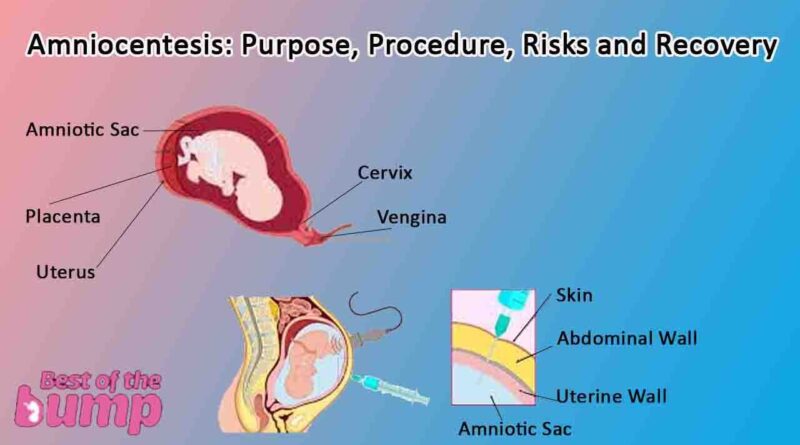Amniocentesis: Purpose, Procedure, Risks and Recovery
Amniocentesis is a medical procedure that holds immense significance in prenatal care. It plays a crucial role in assessing the health of both the fetus and the mother during pregnancy. This procedure offers valuable insights into various genetic, chromosomal, and developmental conditions that can impact the well-being of the unborn child. In this comprehensive guide, we will delve into the purpose, procedure, risks, and recovery associated with amniocentesis.
The Purpose of Amniocentesis

Amniocentesis serves a multifaceted purpose, primarily aimed at providing valuable information about the developing fetus. One of the key objectives of this procedure is to detect genetic disorders and chromosomal abnormalities, such as Down syndrome, trisomy 18, and neural tube defects. By analyzing the amniotic fluid surrounding the fetus, healthcare professionals can identify whether certain genetic conditions are present, allowing parents to make informed decisions about the future of the pregnancy.
Genetic Counseling and Decision-Making
Understanding the genetic health of the fetus is pivotal for expecting parents. Amniocentesis results enable genetic counselors and medical professionals to guide parents through the potential challenges they may face. These insights empower parents to make well-informed decisions about the continuation of the pregnancy, medical interventions, and preparation for the care of a child with special needs.
The Amniocentesis Procedure
The amniocentesis procedure involves extracting a small amount of amniotic fluid from the amniotic sac that surrounds the fetus in the uterus. This fluid contains fetal cells and other biological materials that can provide crucial information about the health of the developing baby. The procedure is typically performed between the 15th and 20th weeks of pregnancy, although the exact timing may vary based on individual circumstances and healthcare provider recommendations.
The Process
During the procedure, a trained healthcare professional uses ultrasound guidance to carefully insert a thin needle through the mother’s abdominal wall and into the amniotic sac. A small amount of amniotic fluid is then withdrawn through the needle and collected for analysis. The entire process is generally completed within a short period, usually lasting around 30 minutes.
Potential Risks and Considerations
While amniocentesis provides valuable information, it’s important to recognize that like any medical procedure, it carries certain risks. The most common risk associated with amniocentesis is the potential for miscarriage. It’s estimated that the risk of miscarriage following amniocentesis is about 1 in 300 to 1 in 500 procedures. Additionally, there is a small risk of infection, leakage of amniotic fluid, and injury to the fetus or mother.
Informed Decision-Making

Healthcare providers work closely with expecting parents to weigh the potential benefits of amniocentesis against its associated risks. This process involves open communication, a thorough explanation of the procedure, and addressing any concerns or questions that parents may have. In some cases, alternative prenatal testing methods with lower associated risks, such as non-invasive prenatal testing (NIPT), may be considered.
Recovery and Emotional Well-being
Following the amniocentesis procedure, many mothers are surprised at how quickly they recover. Most women can resume their normal activities within a day or two, although it’s common to experience mild cramping or discomfort for a short period. Emotional well-being is also a crucial aspect of recovery, as waiting for the test results can be an anxiety-inducing experience. Having a support system and access to counseling can greatly assist parents during this waiting period.
Coping Strategies
Maintaining a healthy emotional state during the waiting period for results is essential. Engaging in relaxation techniques, practicing mindfulness, and seeking emotional support from friends, family, or support groups can help manage anxiety. It’s important to remember that while waiting for results can be challenging, advancements in medical technology have significantly improved the accuracy and speed of obtaining results.
Amniocentesis stands as a remarkable medical advancement that offers valuable insights into the genetic health of the developing fetus. This procedure empowers expecting parents with information that can shape important decisions about the pregnancy and the future well-being of their child. While amniocentesis carries certain risks, its potential benefits are immeasurable in terms of providing clarity and enabling proactive medical interventions when necessary. Through careful consideration, open communication with healthcare providers, and emotional support, parents can navigate the journey of amniocentesis with greater confidence and understanding.




